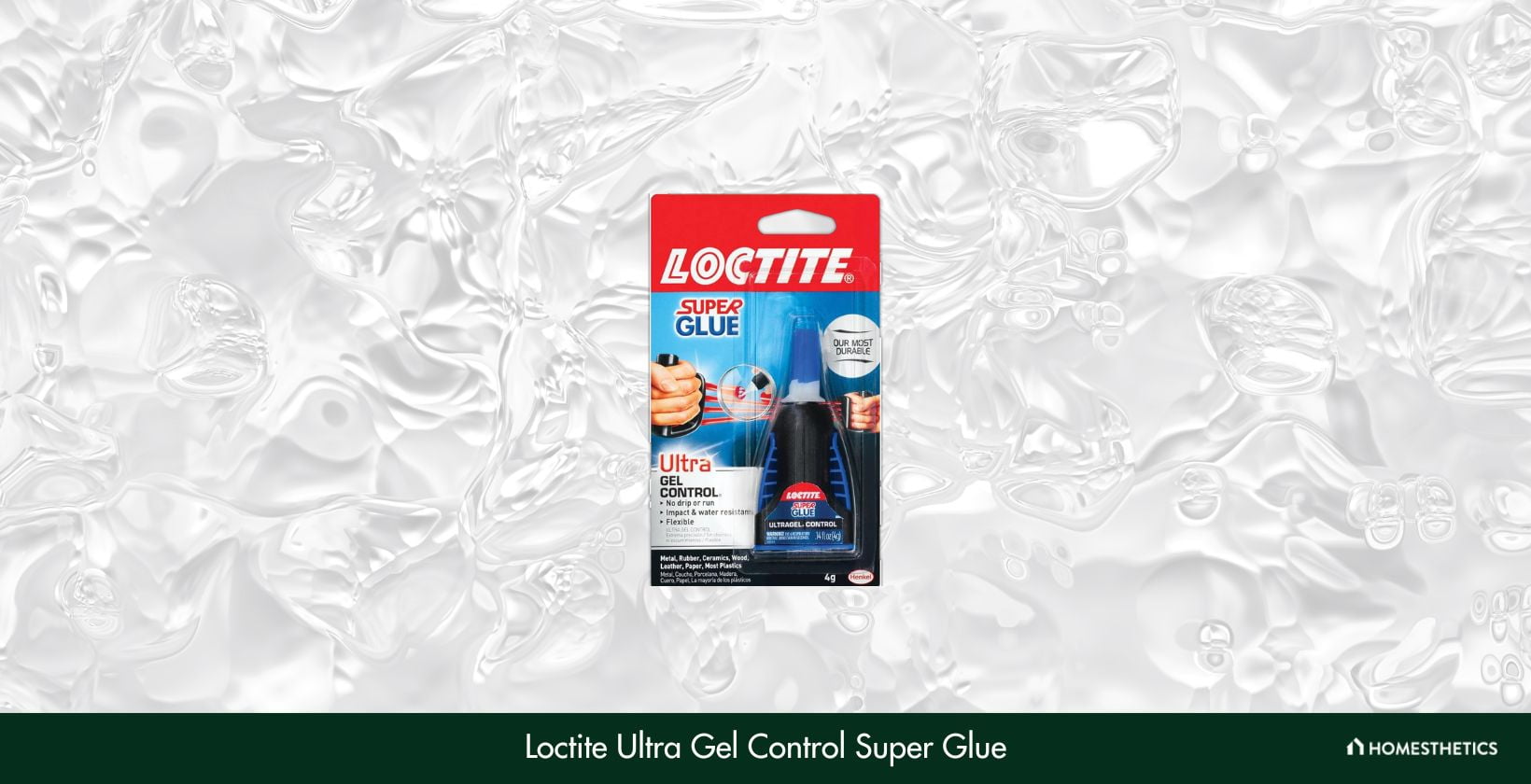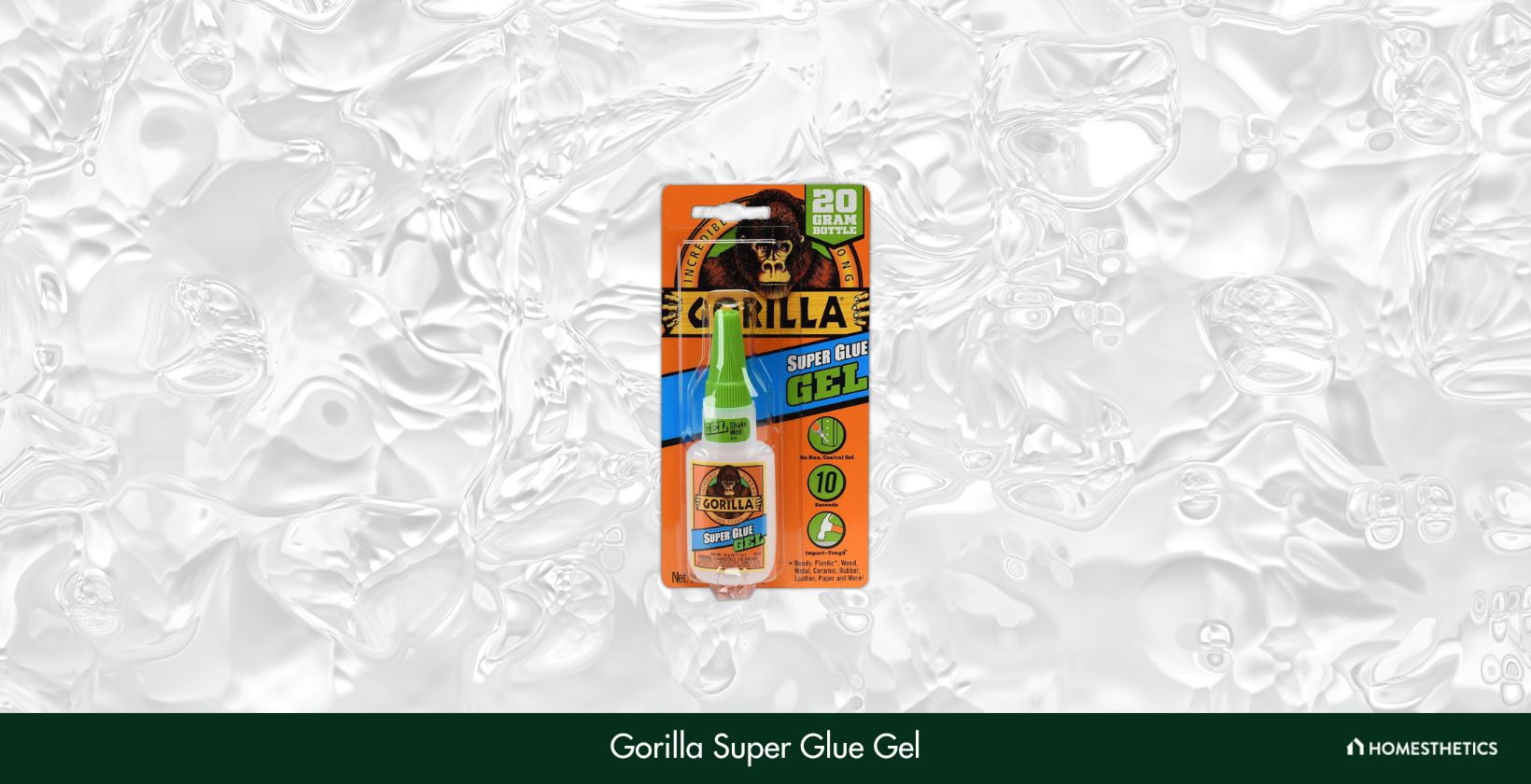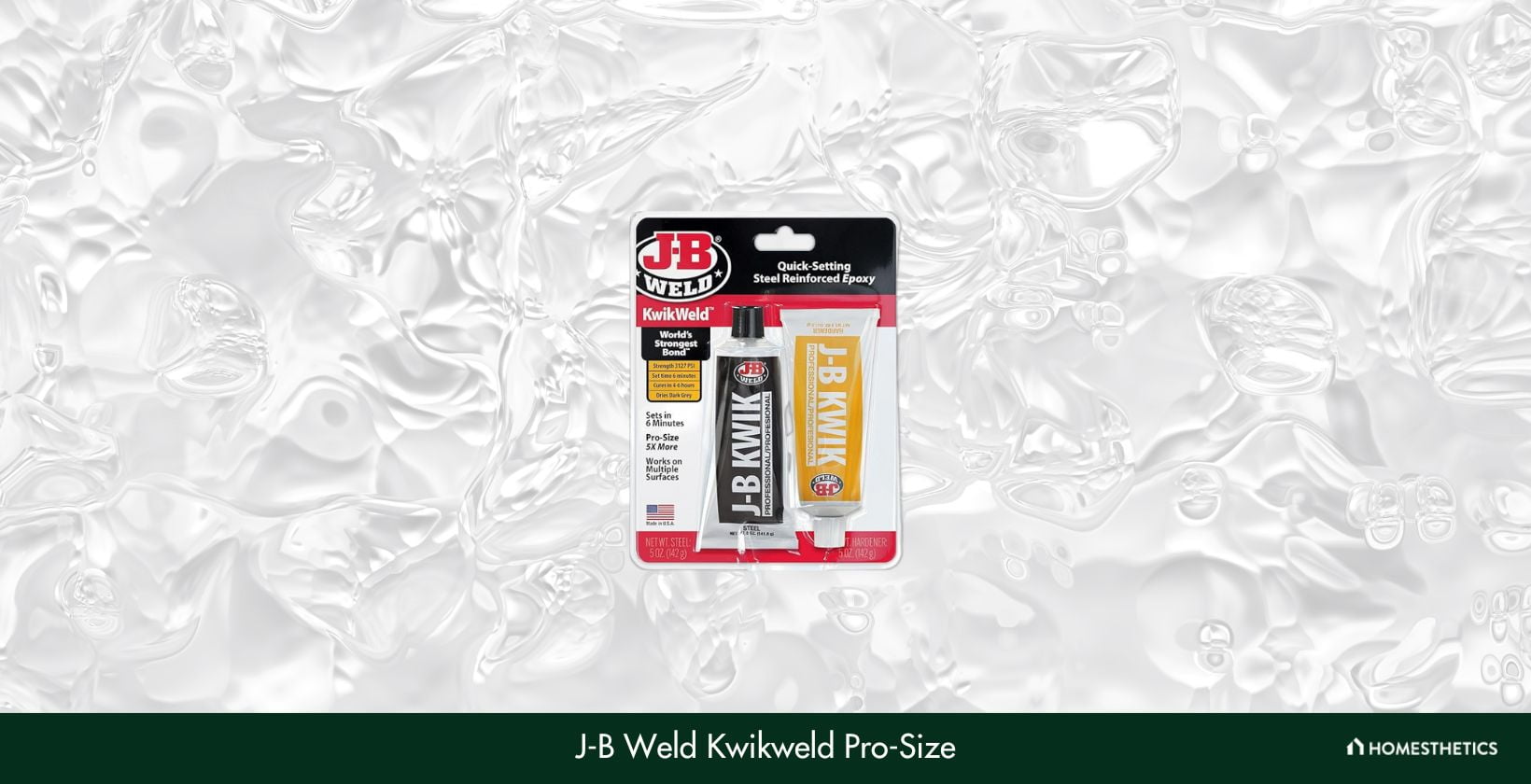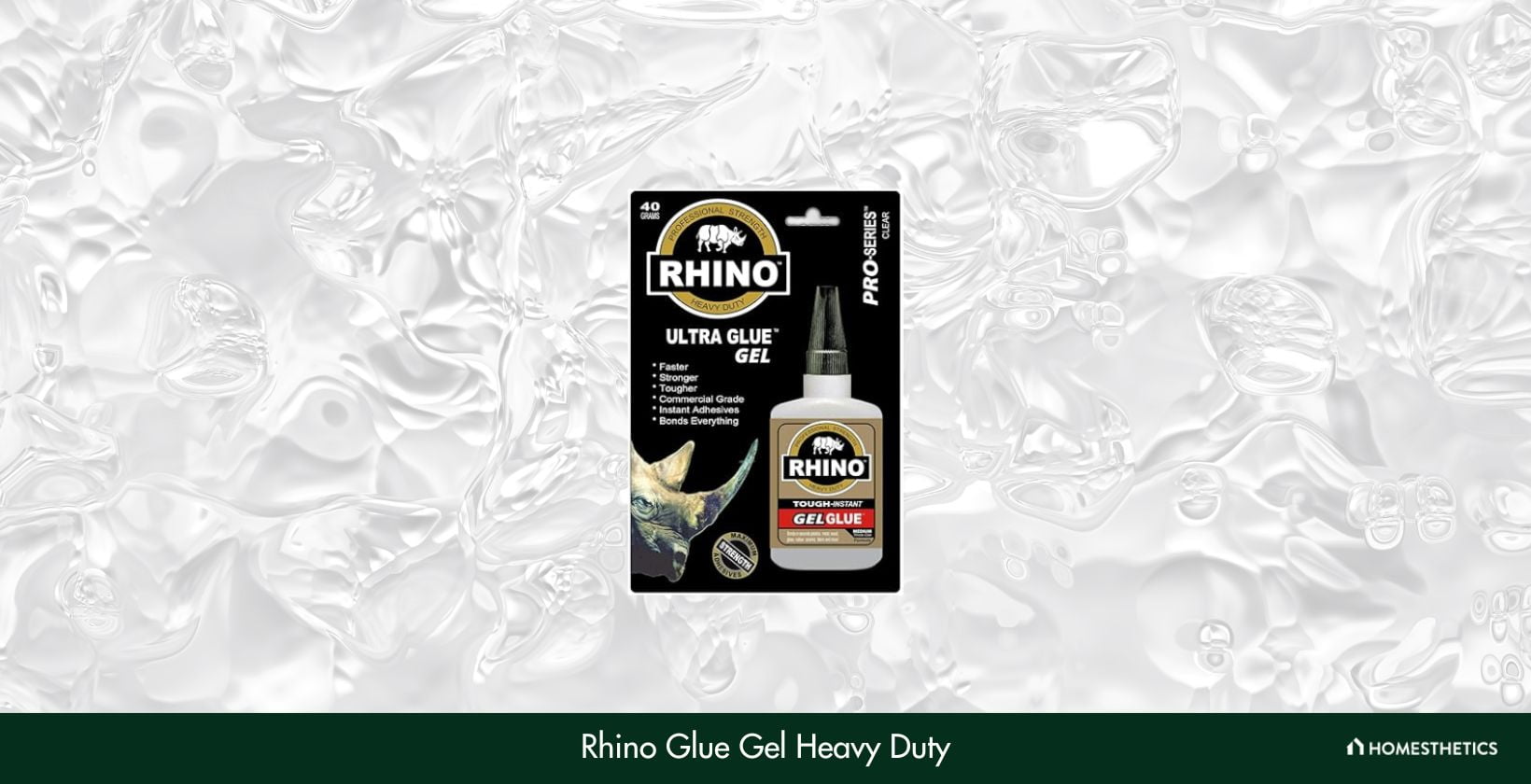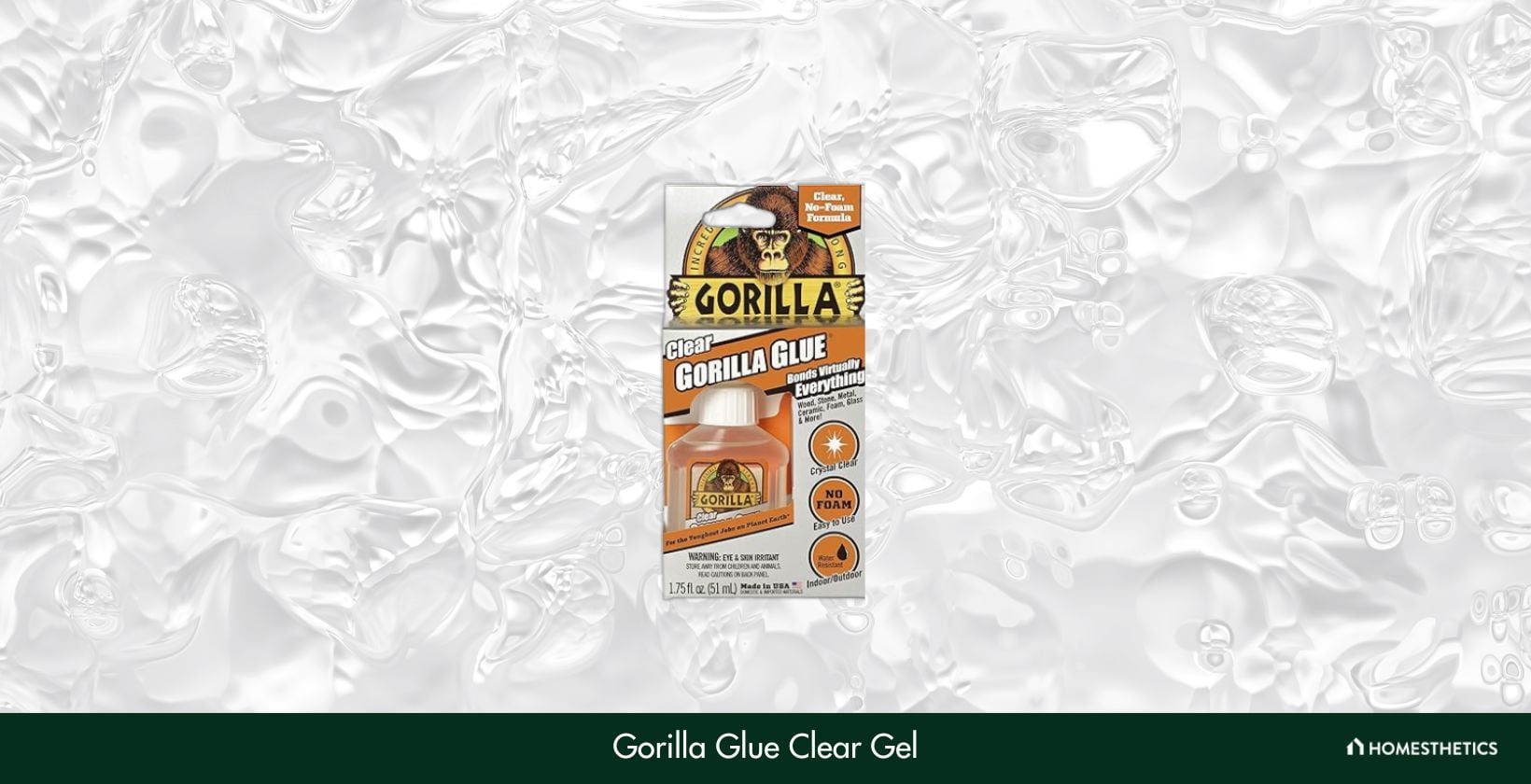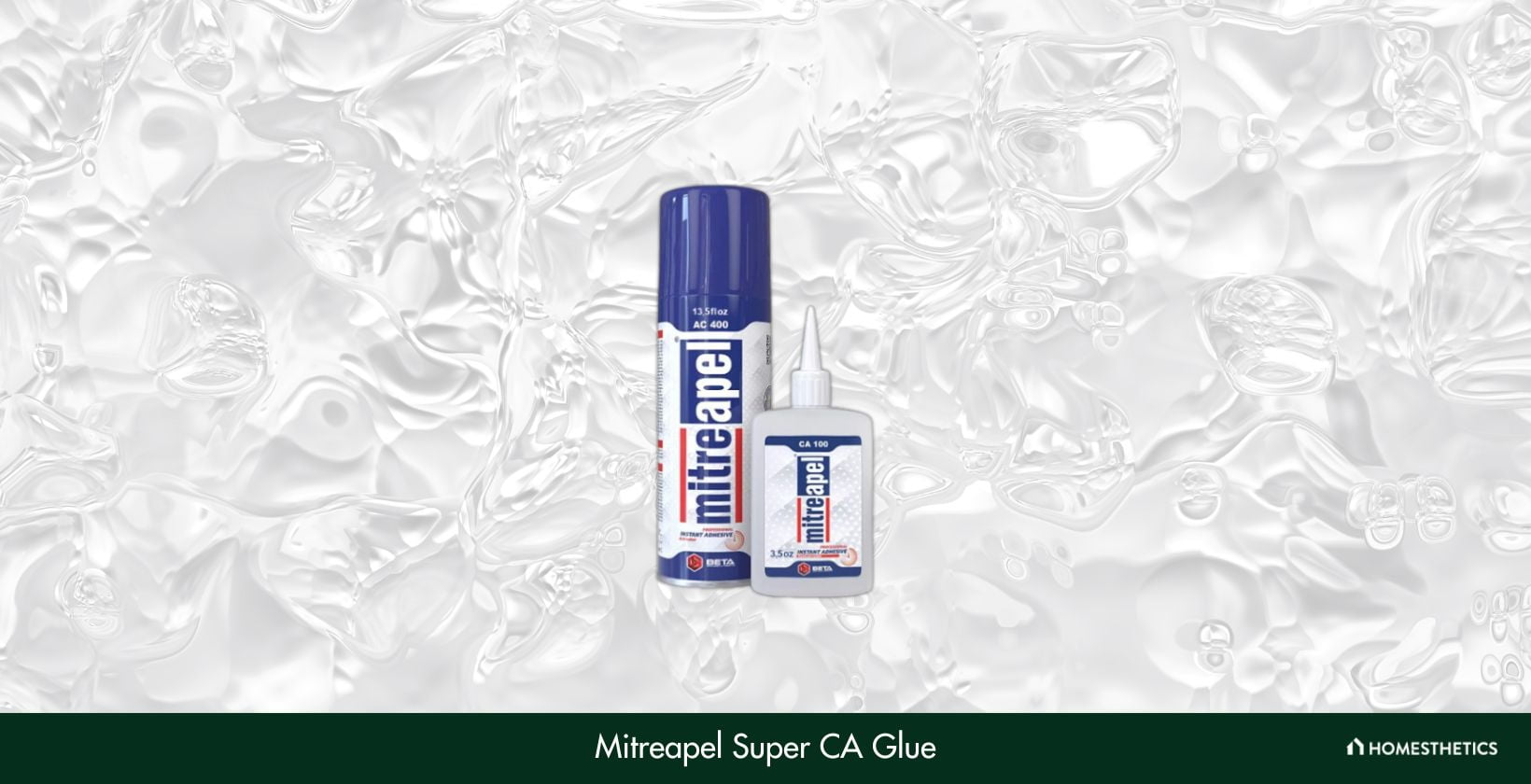For those in the crafting arts, be it at the novice or professional level, gluing wood to metal becomes necessary in a project. The Loctite Ultra Gel Control Super Glue is our top pick for precise application across materials. If you're working on vertical surfaces, the Gorilla Super Glue Gel with its quick-setting formula is an excellent choice. For a strong and fast-bonding solution, the J-B Weld Kwikweld Pro-Size, a potent two-part epoxy, is recommended. Dive into our in-depth reviews to find the perfect match for your specific project needs and ensure seamless metal-to-wood bonds every time.
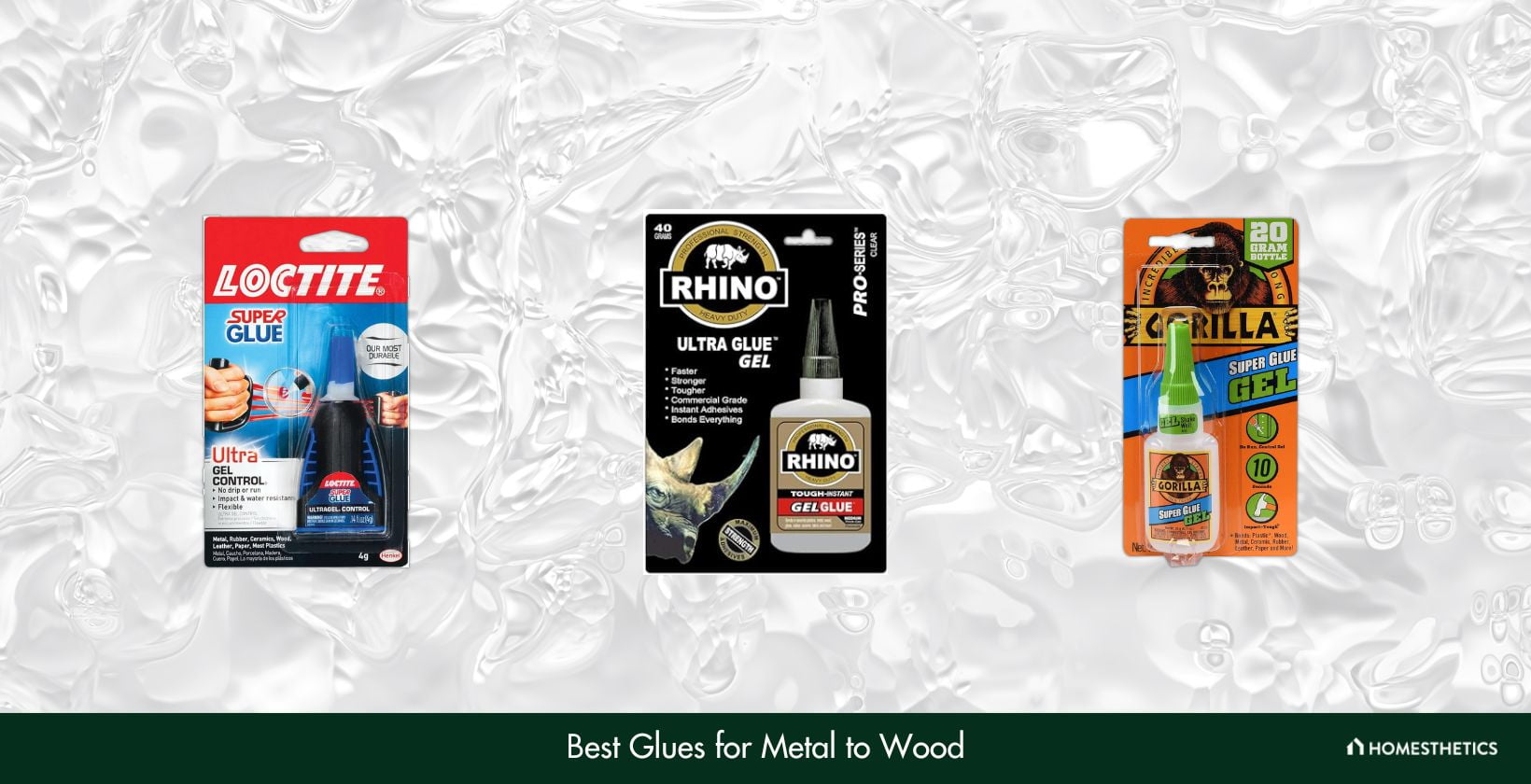
These two materials are so different in density and texture that gluing them to each other can be a daunting task. This is why making sure the glue you use is effective enough to keep the two surfaces permanently attached is crucial.
Listed below are the top 5 recommendations for the best glues to bond metal to wood:
- Loctite Ultra Gel Control Super Glue: Known for its controlled application and high bonding strength, it adapts well to environmental changes and is both waterproof and heat-resistant. Keep in mind, the initial volume may not match the bottle size.
- Gorilla Super Glue Gel: This fast-setting glue is perfect for vertical surfaces and offers excellent impact resistance. For extended use, multiple packs may be required.
- J-B Weld Kwikweld Pro-Size: With incredible tensile strength and fast-drying properties, it's also chemical-resistant when fully cured. It may have a shorter lifespan compared to the original formula.
- Original Gorilla Glue: Renowned for its strength and versatility for indoor and outdoor repairs, it offers a large volume of adhesive. Over time, it may eventually dry out.
- Starbond Medium Premium CA: This glue excels in permeability and strong adhesion, and comes with useful attachments for tight spaces. Just remember, it's not suitable for vertical applications due to its thin viscosity.
FUN FACT | Did you know that superglue can work on metals? Check out our article to know more about the topic.
Without further ado, let’s begin!
So, whether you're looking for a fast-drying option, a waterproof adhesive, or something that can handle high-impact stress, here's the list of the 9 best glues for metal to wood to help you find the perfect one for your project.
1. Loctite Ultra Gel Control Super Glue - Best for Controlled Application
For a heavy-duty performance, the Loctite Ultra Gel Control Super Glue is an excellent option. From a respected brand with 50 years in the game, this rubber-toughened adhesive can withstand many formidable obstacles in an easy-to-use bottle. Not only is this super glue tough and efficient, but it can also work on a variety of materials.
When a product can be handled by a professional and a novice with the same ease, it is a testament to a great design. Using the Loctite Super Glue was easy with its easy-squeeze sides.
Additionally, it can be used repeatedly by sealing it in with the screw-on cap. The super glue is tough and withstands impacts, moisture, and temperature changes. All these strengths are thanks to the rubber mixed into the glue.
Once applied onto the surfaces, no clamps were necessary to seal them together. Simply keeping them on top of each other was enough to achieve the desired results.
The Loctite super glue can be used on not just indoor pieces but on outside projects as well. It can maintain its hold on both wood and metal simultaneously by adjusting its elasticity. Furthermore, being able to use it without worrying about its eventual durability is indeed a good feeling.
During initial use, it was clear that the actual volume of the glue left more to be desired. Despite the large body and innovative design, the contents of the bottle did not seem to proportionately match the size of the bottle.
What We Like
- Controlled application
- Fast and easy drying
- Transparent even after drying
- Adapts to changes in the environment
- Able to dry without pressure or clamps
What We Don't Like
- A little volume of superglue
- Prone to clogged nozzle
2. Gorilla Super Glue Gel - Best for Vertical Surfaces
A standout company in the world of glue and adhesives, Gorilla Glue’s Super Glue Gel is a fast-setting and tough formula. With the unique gel consistency, a whole new level of application is possible. This gel is truly a “super” glue in a small cartridge.
One of the most remarkable features of the Gorilla Super Glue Gel is the gel consistency that can stick to a vertical surface. These angles can be challenging to get to with gravity pulling the glue out of position and not curing correctly.
Additionally, the super glue gel dries exceptionally fast. The packaging claimed a drying period of 10-45 seconds, which held up in testing. In fact, the light cartridge makes it even more ideal for carrying around for quick fixes.
When it comes to the design of the cartridge, it is able to dispense the gel smoothly in a controlled manner. What’s more, the cap design makes sure the glue won’t be able to clog the nozzle when not in use. Always a welcomed touch for reusability.
The Gorilla Super Glue Gel is sold in different sets with either one, two, or ten packs. However, the single pack is not a feasible option to use as the amount of gel in one pack is insufficient for continued use.
What We Like
- Fast-drying
- Capable of vertical applications
- Impact resistance
- Easy application
What We Don't Like
- Multiple pack purchase required for reusability
3. J-B Weld Kwikweld Pro-Size - Best for Permeability
If two-part epoxies are the method you choose to take, the offering from J-B Weld, the Kwikweld, is a strong option. The strength and fast-curing period are ideal for use by hobbyists and professionals alike. Additionally, a steel reinforcement in the mixture adds incredible tensile strength to this epoxy blend.
With such a bold claim on the packaging of being the “World’s Strongest Bond,” there is an expectation of how durable the epoxy would be. Thankfully, these expectations were held up well.
Regardless of what materials the epoxy was rated to be effective on, the results across the board were unanimous. It is able to hold its own when used and mixed correctly.
A surprise was the fast dry and cured time. Within six minutes, the epoxy dries, and in four to six hours, the entire application has been cured. After being fully cured, the epoxy is supposed to be not only waterproof but chemical, petroleum, and acid-resistant.
Using a clear solution can be challenging to differentiate between where the adhesive is applied or not. A feature of this epoxy that was useful in this context is the dark grey color it takes on when cured fully to remove any excess glue.
The Kwikweld Pro is a successor to another original formula from J-B Weld. The original does seem to have a longer lifespan despite the extra resistance in the newer Kwikweld Pro once cured.
Perhaps if some aspects of the original epoxy could have been maintained to preserve the lifespan of the epoxy, it would have performed better.
What We Like
- Large 10 oz container
- Fast drying and curing time
- Dark grey color when cured
- Strong tensile strength
What We Don't Like
- Shorter lifespan compared to older epoxy formula
4. Original Gorilla Glue
Another super glue option from Gorilla, the original Gorilla Glue, is widely used for its versatility and strength. It is able to handle indoor and outdoor repairs while maintaining its integrity. With a 100% waterproof claim to fame, there is little that can break down Gorilla Glue.
Using the original Gorilla Glue is extremely useful for any minor repairs that may pop up. The versatile adhesion possibilities are almost endless.
What makes this super glue great is its easy application. Just dampen the surface and secure the two pieces with even pressure. The rest manifests after a couple of hours as a single complete piece. Any excess glue peeping out can be sanded away to make the repair imperceptible.
While this resin may be activated by water, it becomes fully waterproof once it is fully cured. Having the peace of mind that outdoor repairs will last through anything nature throws at it is a welcome feeling.
The amount of superglue in a container is a significant step up from other superglue options. A whole eight oz. will keep you going for years, at least.
Once the container of Gorilla Glue has been opened and exposed to the air, it begins the slow process of drying out. Atmospheric moisture dries out the glue and will eventually solidify the whole container. Despite using preventive measures, it is inevitable; however, the process is slow and will take years to complete.
What We Like
- Extremely strong
- Fully waterproof
- Simple and easy application
- The large volume of superglue in the container
What We Don't Like
- Eventually dries out after some years
5. Starbond Medium Premium CA
A cyanoacrylate glue, Starbond’s Premium CA glue is a valuable adhesive to have around. Due to having attachments to reach tight spaces, this handy setup will be a great tool to have. Besides the useful attachments, the CA glue itself is strong and versatile.
The inclusion of attachments along with the CA glue is a thoughtful touch by Starbond. If not for the unclogging of the nozzle, then the special applicator tips will help precisely apply the glue on small surfaces.
Additionally, the shelf life of the Premium CA glue is exceptional. Starbond CA glues have a shelf life of several years. They are confident in their claims enough to back it up, offering a 30-year warranty on their product.
Due to the viscosity of the Medium Premium CA, it can permeate into thin gaps like a thin viscosity. It can also be coated like a thin viscosity glue, which is useful for using it as a finish. Additionally, the strength of the adhesive is similar to the thick viscosity variant and holds well.
One drawback to using this medium viscosity CA glue is the weak structure it holds. The thin viscosity qualities dominate the overall rigidity of the glue before it sets. As a result, the glue has a tendency to drip from the nozzle and run down the side of the surface on vertical applications.
What We Like
- Useful attachments
- Long shelf-life
- Excellent permeability like a thin viscosity glue
- Strong adhesion similar to thick viscosity glue
What We Don't Like
- Not suitable for vertical uses
6. Rhino Glue Gel Heavy Duty
Rhino Glue Gel is a clear commercial grade heavy duty gel that can adhere to many material types. This glue gel is strong and resists shocks and impacts as well as resists water. It is a safe choice for any adhesive task with a fast bonding time and a powerful formula.
Using a medium viscosity gel can be a tricky ordeal; however, the Rhino Glue Gel performed with little to no hiccups. The strength it holds even after using only a thin layer of it is remarkable.
One of the most convenient features of this gel is the fast dry time. While it bonds in seconds, the overnight curing option will ensure an all-around secure adhesion. This comes in handy for materials that can not be easily clamped together for drying.
The gel itself is clear in color, so being aware of where it is being applied and how much gel is being used is easier. Due to its viscosity, it is even able to bind porous materials as well with no issues. Once cured, it can withstand a large amount of exposure to impacts and moisture as well as heat. Perfect for even outdoor touch-ups!
When working with a super glue gel, the glue may seep out onto the surrounding area of the gap to be filled. The excess glue oozing out can become messy with a fast bonding time, potentially damaging the surrounding material. This could have been made easier with an application tool or precise nozzle.
What We Like
- Fast drying time
- A minimal volume is required for the application
- Can withstand natural elements
- Clog-resistant nozzle design
What We Don't Like
- Struggles with precise application
7. Gorilla Glue Clear Gel
Another offering from the Gorilla brand is a clear glue gel formula. This versatile glue gel is able to grip many different surface types with ease. Using a unique non-foaming formula that is clear gives a clean application after every use.
Gorilla is a well-known brand in the adhesive market for a good reason. Their clear glue gel product works like a charm no matter what it is that needs binding.
Their claims to a non-foaming solution were no joke; the gel remained clear throughout the application process. This came especially in handy when trying to see where the nozzle is pointing for precise application.
Additionally, the glue can be used for outdoor purposes too. Once the gel has been properly cured, it becomes water-resistant.
What’s more, the gel can work with many materials, not only indoors but outdoors. Be it wood, stone, metal, or ceramic, even delicate foam material can be used with the clear gel.
The package has a disclaimer in regards to the storage of the gel that can potentially become a nuisance. In order to maintain the transparent nature of the gel, it must be stored in a location with adequate lighting and heat, or it becomes yellowed. For those who keep tools in dark drawers or sheds, this can be an inconvenience.
What We Like
- Compatible with a variety of surfaces
- Easy application due to the clear color of the gel
- Simple to use with a no-foaming formula
- Water-resistant when cured
What We Don't Like
- Dries over two hours with a 24-hour curing time
8. Mitreapel Super CA Glue
The Super CA Glue from Mitreapel is a powerful adhesive with a two-part application process. Drying and curing time is expedited tremendously, with the activator speeding up the adhesive. With a simple application, a clean adhesion is possible for many different material types.
Probably the best feature of the Super CA glue from Mitreapel is the easy application process. Joining narrow and tight surfaces together would be difficult to maneuver with other adhesives. However, the adhesive and activator spray allowed for precise coverage no matter the area to be covered.
Additionally, the fast drying time is handy for quick fixes. Within a few seconds, the surfaces were joined with adequate strength. Once it has been dried thoroughly, the glue can be worked on with sanding, finishing, and even painting.
When the glue dries, it remains clear to give a clean, finished look to the repair. Combining this with the other features of the CA glue, it is possible to have a seamless repair with little to no effort involved in the clean-up afterward.
The design of the adhesive bottle is cumbersome to use. There are many instances where the glue will struggle to come out and get stuck in the nozzle. Additionally, squeezing the bottle is difficult due to the lack of an ergonomic design.
What We Like
- Precise application
- Easy to use
- Fast drying and curing time
- Versatile for use with different materials
What We Don't Like
- Glue occasionally becomes stuck in the nozzle
9. Bazic Contact Cement Adhesive Glue
A strong adhesive that is latex-free, the Contact Cement Adhesive from Bazic is a handy tool to have around the house. The flexibility to adhere to porous and non-porous surfaces allows for versatility with many material types. Once the separate surfaces make contact, the adhesion remains strong.
Contact cement is handy for quick fixes around the house. The flexibility of the glue allows it to work well with different types of materials with no compromise in strength.
Securing two surfaces together without a clamp allows for the two pieces to remain the way you want them to be positioned. Air drying them is enough to begin curing the glue, and when they are put into contact with each other, it becomes affixed in no time. Only for heavy-duty materials was it necessary to use a clamp to secure the two pieces together.
The tube’s design helps the glue to come out smoothly and easily. The nozzle keeps the latex-free solution easy to apply. Additionally, it is easy to store away and carry around with the lightweight tube design.
When the contact cement is dried, there is a possibility of some oozing out between the seam. If exposed to air, the glue will become yellowish in color. This can be a nuisance if trying to have a clean and seamless attachment.
What We Like
- Easy and simple application
- Applicable to a number of material types
- No clamp is needed for quick fixes
- Tubed design
What We Don't Like
- Yellowish tinge when dried
What Is the Best Glue for Metal-To-Wood Bonding?
This table compares glues for metal-to-wood bonding based on attributes like bonding strength, drying time, waterproof capability, heat resistance (up to degrees Fahrenheit or Celsius), and specific application features for each product.
| Product | Bonding Strength | Drying Time | Waterproof | Heat Resistant | Application |
|---|---|---|---|---|---|
| Loctite Ultra Gel Control Super Glue | High | 10-20 seconds | Yes | Yes up to 212°F/100°C | Precise control, no mess |
| Gorilla Super Glue Gel | High | 10-20 seconds | Yes | Yes up to 200°F/93°C | No run control gel formula |
| J-B Weld Kwikweld Pro-Size | Very high | 6 minutes | Yes | Yes up to 300°F/149°C | Two-part epoxy, professional grade |
| Original Gorilla Glue 5002801 | Very high | 2 hours | Yes | Yes up to 200°F/93°C | Expands as it dries, waterproof |
| Starbond Medium Premium CA | High | 10-20 seconds | Yes | Yes up to 200°F/93°C | Thin viscosity, fast curing |
| Rhino Glue Gel Heavy Duty | High | 5-10 minutes | Yes | Yes up to 200°F/93°C | Gel formula, gap-filling |
| Gorilla Glue Clear Gel | Very high | 10-45 seconds | Yes | Yes up to 200°F/93°C | Crystal clear, no foam |
| Mitreapel Super CA Glue | High | 5-10 seconds | Yes | Yes up to 248°F/120°C | Thin viscosity, high strength |
| Bazic Contact Cement Adhesive Glue | High | 10-20 minutes | Yes | Yes up to 140°F/60°C | Good for larger surfaces, brush included |
Buying Guide for the Best Glues for Metal to Wood
With all these options, what should you be looking for in an adhesive to keep the metal and wood surfaces together? Metal and wood are very different materials with certain qualities that make any adhesion tricky.
Wood, for example, is a porous material which means it shifts its size, contracting and expanding, with changes in temperature. On the other hand, metal is a non-porous material. This means it has no air gaps or changes in size. It is a smooth surface which makes it difficult for any glue to grip onto it and adhere.
-
Types of Metal and Wood Adhesive
In order to join wood and metal, two types of glues can be used. These are polyurethane glue and epoxy adhesive.
A go-to option for joining materials, polyurethane glue is ideal for general projects and many minor repairs that need to be done. It is able to set quickly and maintain a strong bond between different density materials.
On the other hand, an epoxy adhesive is a two-step process. The first application is the glue to one surface and then a spray-on hardening agent to the other. After joining and curing the two surfaces, the adhesion is complete.
While an epoxy adhesive is durable against temperature and impact, polyurethane glue is still preferable for its flexibility in handling different materials.
-
Preparation for Adhesion
Before applying any adhesive to the surface of the wood or metal, there are some steps to be taken to make sure the bond is strong. Making sure these precautions are taken is important to keep both sides securely fastened to each other permanently.
Cleaning and drying the surfaces is a must to make sure the glue can grip the material’s surface itself and not any dust or dirt on it. Additionally, the adhesive should be placed on only one surface as too much glue can cause a weaker bond between the two.
Depending on the type of adhesive being used, the curing and clamping period of the materials together can vary. While some span seconds, others may require an overnight curing period. Always refer to the packaging or product information to ensure enough time is given to set it.
Avoid any sunlight or moisture when working with wood and metal. Being exposed to UV light and dampness can affect the strength of some glues, resulting in a weaker bond.
-
Method of Application
There are a number of application types, from spray-on to two-step epoxy. Considering what area needs to be covered can affect the choice between different application methods.
A spray-on method may not be suitable for areas that are smaller and require precision. Additionally, the spray-on method may not have as strong of a bond as other methods.
Alternatively, a two-part epoxy may need to be mixed before application; otherwise, there are variants that are simply one-part epoxies. These one-part epoxies can be applied directly without any mixing. Epoxies tend to have a stronger bond as compared to the spray-on method.
How do you glue metal to wood?
To effectively glue metal to wood, start by ensuring both surfaces are clean and free of dirt. Apply the glue according to the instructions, covering the dry surfaces of both the metal and wood. Allow it to set, and the bond will form between the metal and wood.
Can you use regular glue for bonding metal to wood?
Using regular glue is not recommended for bonding metal to wood. Everyday glue isn't designed for this purpose and is more effective on porous surfaces like wood. Metal, being non-porous, won't form a strong bond with regular glue, making it unsuitable for this application.
How strongly does metal bind to wood?
The strength of the bond depends on factors like the type and quantity of glue used. Using more glue will result in a stronger bond, but avoid excessive amounts to prevent wastage. Epoxy glue provides a relatively strong bond between metal and wood, although it lacks flexibility. On the other hand, superglue or polyurethane glue allows for more flexibility.
What to do if the glue does not bond?
If the glue doesn't bond, ensure the metal surface is clean and dry. If it's not, use solvents like acetone to thoroughly clean and dry it before applying the glue. Additionally, wood may contain oily substances that hinder bonding. To address this, use an activator to remove such substances from the surface before applying the glue.
How do you remove excess glue?
To remove excess glue that has not yet cured, use acetone. This will effectively dissolve the excess without affecting the curing process. Once the glue has hardened, acetone will no longer be effective. In such cases, physically removing the excess glue through cutting, scraping, or sanding with sandpaper is recommended.

